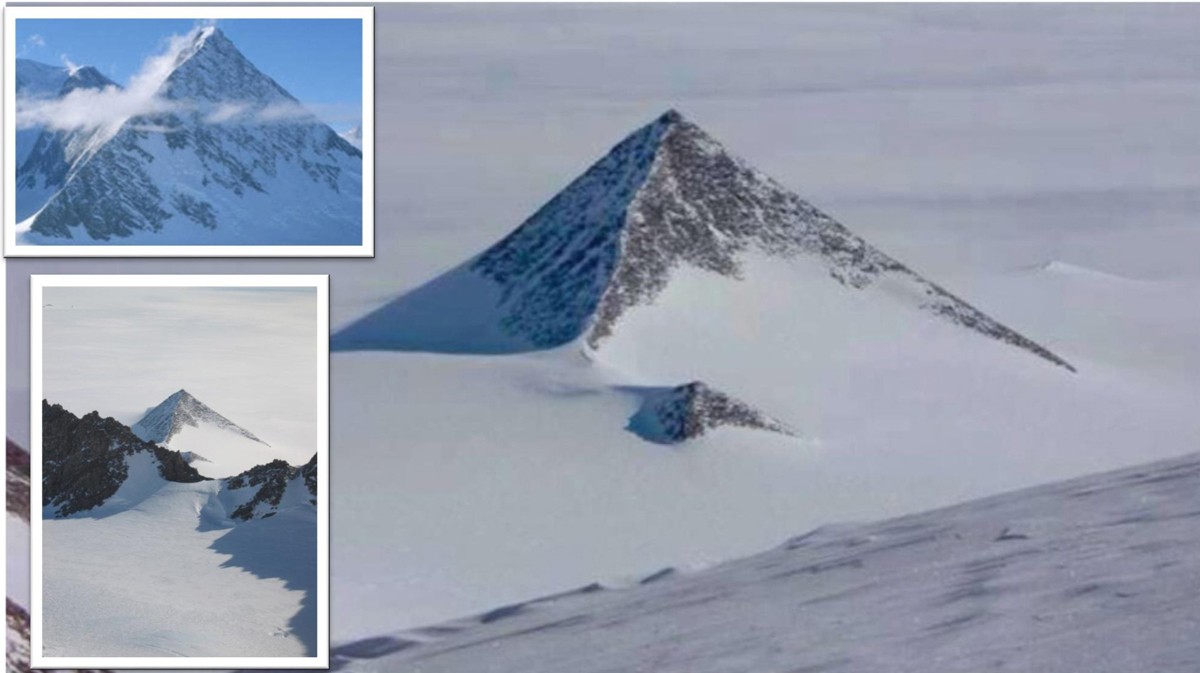Over the years, a group of individuals with unconventional beliefs has become increasingly interested in Antarctica. They’ve been captivated by certain peculiar natural occurrences like the “bleeding waterfalls,” a phenomenon that continues to baffle observers. Additionally, they’ve been intrigued by the discovery of a structure often referred to as a “pyramid” on the continent. However, it’s essential to clarify that this structure is actually just a mountain nestled within the Ellsworth Mountains, the highest mountain range in Antarctica, spanning over 400 kilometers.

The mountain in question was first encountered during an expedition in the early 20th century, and at the time, it was given the nickname “The Pyramid” to keep its true nature concealed. Over the decades, numerous speculations have arisen about the mountain’s true identity, despite it being nothing more than a rocky peak emerging from the icy landscape.
Recently, the attention of these individuals has shifted to another intriguing geographical feature located at coordinates 79°58’39.25?S 81°57’32.21?W, a spot that has gained popularity through certain online platforms.
A geologist, Dr. Mitch Darcy, associated with a research center, has clarified that the pyramid-like formations are simply natural rock structures found within the Ellsworth Mountains. These formations may resemble pyramids, but they are purely coincidental and lack any mysterious or artificial origins.
“It’s not a complicated shape, so it’s not a special coincidence either. By definition, it is a nunatak, which is simply a peak of rock sticking out above a glacier or an ice sheet. This one has the shape of a pyramid, but that doesn’t make it a human construction.”
Apart from these natural wonders, Antarctica has also captured the imagination of some conspiracy theorists with their outlandish claims. For instance, a theorist named Eric Hecker has propagated a controversial belief about a research center located near the South Pole. According to Hecker, this facility is somehow linked to an “air traffic control” hub for extraterrestrial beings, suggesting hidden motives beyond scientific exploration.
While such theories circulate within certain communities, it’s crucial to approach them with skepticism, considering the lack of concrete evidence supporting these claims. Antarctica’s remoteness and mysterious allure may provide fertile ground for imaginative ideas, but it’s essential to maintain a balanced perspective, relying on credible scientific research rather than unfounded speculations.
Our planet’s exploration should be driven by curiosity and critical thinking, separating genuine discoveries from mere fantasies. Antarctica, with its icy splendor, should remain a realm of scientific exploration, free from sensationalism and baseless assertions.


